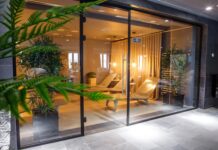A pool and spa can be a wonderful addition to any property, providing a place to relax and entertain guests. However, before you jump into designing and constructing your dream pool and spa, there are several factors that you should consider. In this article, we will explore these factors in detail to help you make informed decisions.
Purpose of the Pool and Spa
Before designing your pool and spa, it’s important to consider their intended purpose. Will it primarily be for recreation and entertainment, or will it be used for exercise and therapy? This will impact the size, depth, shape, and features of your pool and spa.
Available Space
The size and shape of your property will determine the size and shape of your pool and spa. You will need to consider factors such as setbacks, zoning restrictions, and any landscaping or hardscaping that you would like to include.
Zoning Restrictions
Before starting any construction, you should check with your local zoning board to determine any restrictions or permits needed for your pool and spa. This may include setback requirements, fencing regulations, and other safety measures.
Budget
Your budget will also play a crucial role in the design and construction of your pool and spa. It’s important to consider all costs associated with the project, including materials, labor, permits, and ongoing maintenance expenses.
Financing Options
If your budget is tight, you may want to consider financing options such as loans or lines of credit. Be sure to compare interest rates and terms to find the best option for your needs.
Style and Aesthetics
The style and aesthetics of your pool and spa should complement the overall look and feel of your property. Consider factors such as color, shape, and materials to create a cohesive design that enhances your outdoor living space.
Material Choices
There are a variety of materials available for pool and spa construction, each with their own pros and cons. Some popular options include concrete, vinyl, and fiberglass.
Features and Amenities
Your pool and spa can include a range of features and amenities to enhance your outdoor living space. Some popular options include waterfalls, fountains, lighting, and sound systems.
Energy Efficiency
When selecting features and amenities, consider their impact on energy consumption and sustainability. Options such as solar heating and LED lighting can help reduce your carbon footprint and lower ongoing expenses.
Maintenance Requirements
Proper maintenance is essential to keeping your pool and spa in top condition. Before designing your pool and spa, consider the ongoing maintenance requirements, including cleaning, chemical treatments, and equipment upkeep.
Professional Maintenance Services
If you prefer to leave maintenance to the professionals, consider hiring a reputable pool and spa maintenance company. This can help ensure that your pool and spa are properly cared for and in good condition for years to come.
Safety Considerations
Your pool and spa should be a safe place for everyone to enjoy. Consider factors such as fencing, alarms, and covers to prevent accidents and ensure that your pool and spa meet all safety standards.
Regulations and Standards
Be sure to check local and national regulations and standards for pool and spa safety, including fencing and barrier requirements, depth markings, and other safety measures.
FAQs
Q1. Can I design my pool and spa myself?
Yes, you can design your pool and spa yourself, but it’s important to consult with professionals to ensure that your design meets all safety standards and regulations.
Q2. How long does it take to build a pool and spa?
The time it takes to build
a pool and spa can vary depending on the complexity of the design, the size of the pool, and the materials used. On average, it can take anywhere from a few weeks to a few months.
Q3. Can I add features and amenities to my pool and spa after it’s built?
Yes, you can add features and amenities to your pool and spa after it’s built. However, it’s important to ensure that any additions meet all safety standards and regulations.
Q4. What kind of maintenance is required for a pool and spa?
Proper maintenance for a pool and spa includes regular cleaning, chemical treatments to maintain water balance, and upkeep of equipment such as filters and pumps.
Q5. Are there any safety regulations for pool and spa design?
Yes, there are safety regulations for pool and spa design, including fencing and barrier requirements, depth markings, and other safety measures. It’s important to check local and national regulations to ensure that your pool and spa meet all safety standards.
Conclusion
Designing a pool and spa can be an exciting project, but it’s important to consider all factors before jumping in. By considering the purpose of the pool and spa, available space, budget, style and aesthetics, features and amenities, maintenance requirements, and safety considerations, you can create a design that is functional, beautiful, and safe. Don’t forget to consult with professionals and check regulations to ensure a successful and enjoyable pool and spa experience.
Source: http://www.jason-roe.com/












